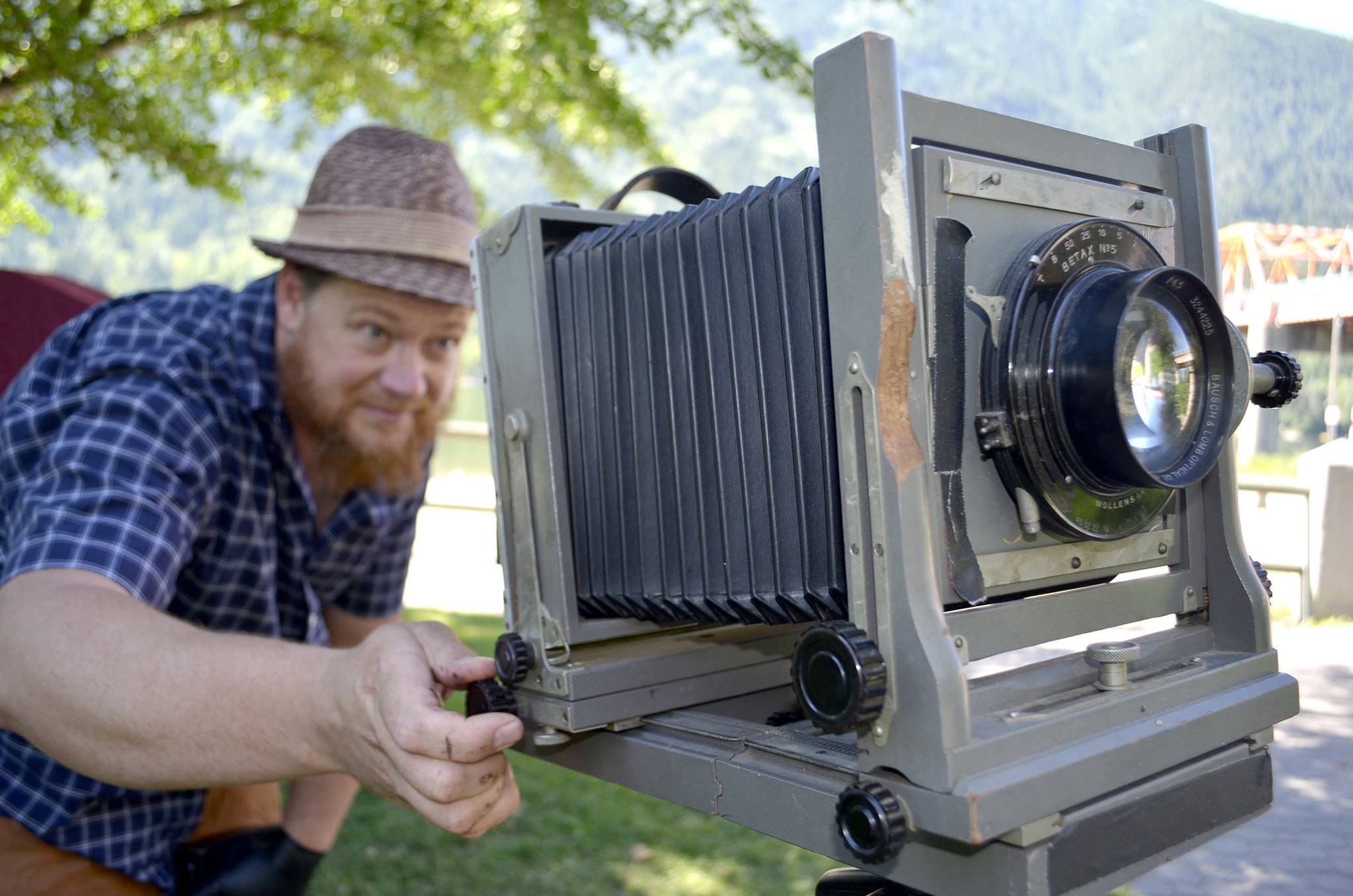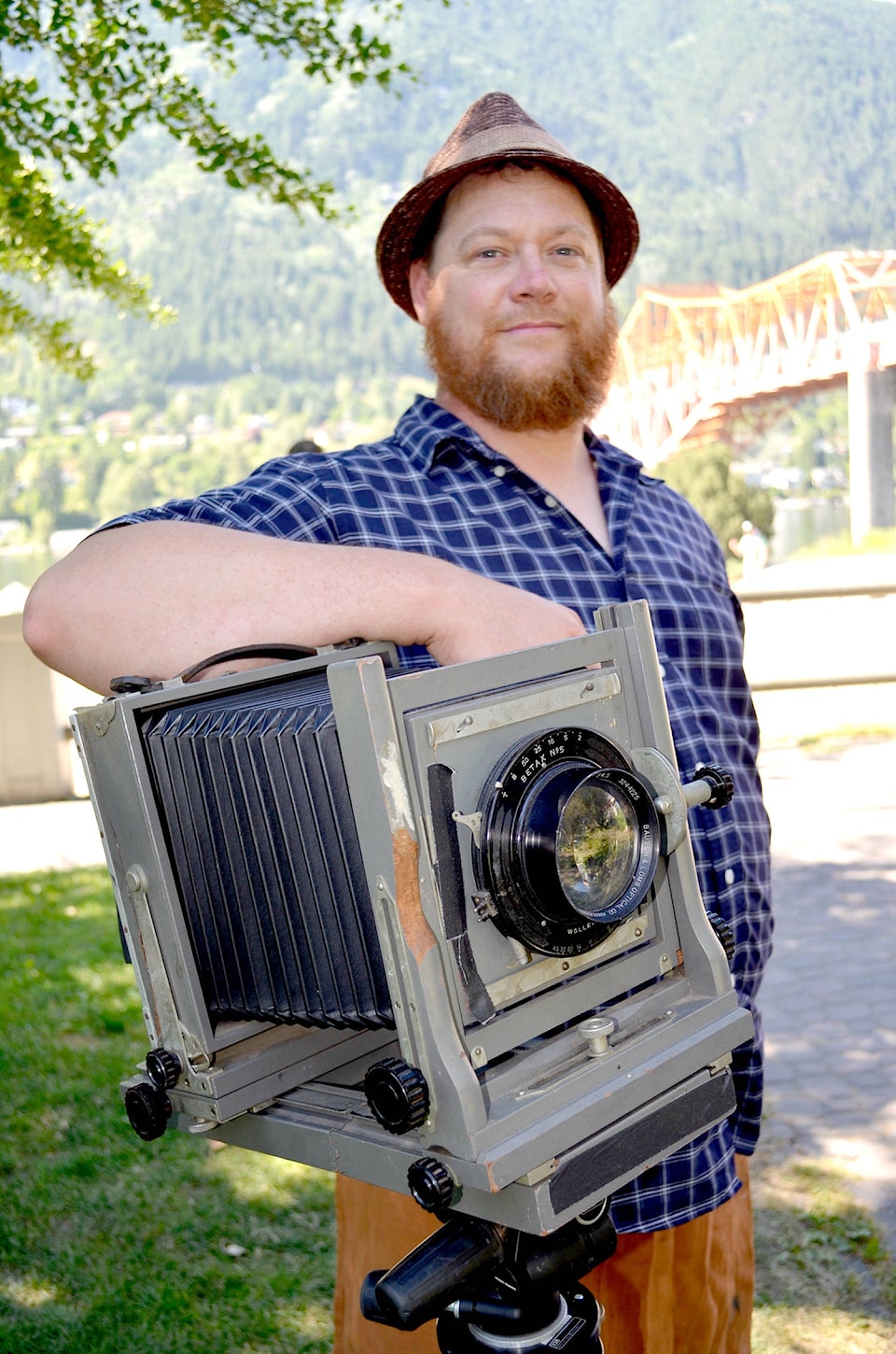It’s a lot more complicated than taking a selfie.
When Kootenay photographer Tekoa Predika composes tintype portraits out of his mobile dark room, it takes him about 15 minutes to produce a single image — which he realizes seems like an eternity in the age of iPhones.
But there’s something magical about the process that makes it worth the extra effort.
“I’m dyslexic, so I perceive the world differently,” the Rainika Photographik founder told the Star.
“When I look through this viewfinder, it matches how I see the world — upside down and backwards — and that makes sense to me, I understand it.”
Predika and his wife Michelle Rainey started his business in 2013, making the rounds of festivals such as Tiny Lights and travelling to events like the Calgary Stampede while they worked out of a converted trailer. Buoyed by support from Community Futures, they’re looking to re-introduce a technology that many people haven’t even heard of.
So far, it’s been a hit. Recently he brought his operation to the Touchstones Museum gala, and coming up he’ll be doing portraits at Starbelly Jam in Crawford Bay and at the Kaslo Jazz Etc Festival. He feels like the business is picking up momentum.
“It’s starting to feel like the plane is taking off. People seem really drawn to this technology. It’s been called the tintype time machine.
“One of the fascinating things is it only sees ultraviolet and blue light, so it actually sees light that we don’t,” he said.
“In a lot of ways it’s not for the faint of heart, because it will bring out your sun damage and wrinkles, and people with blue eyes end up looking a little trippy. But it’s such an exciting process and I love it for portraiture.”
He said the time involved adds to the experience.
“The person has to sit with me, and there’s an engagement that happens more than if I was just shutter-bugging. They have to sit and own the photograph, and be very conscious of the process.”
The experience involves his uncle’s historic camera, which he estimates is from the 1930s or 1940s. He loads with a simple piece of aluminum that has been bathed in a carefully concocted emulsion. (Strangely enough, there’s no actual tin used in tintypes.) Then, using a chemical called collodion, he makes the metal light sensitive long enough for the image to be melted into it.
Once he’s finished, the resulting portrait is sealed and protected for at least 100 years — giving it a permanence so often lacking in photos taken these days.
“What I love is you end up with a tangible object. So many people don’t bother getting photos printed anymore, but this becomes something you can hold in your hands and keep for a long, long time.”

